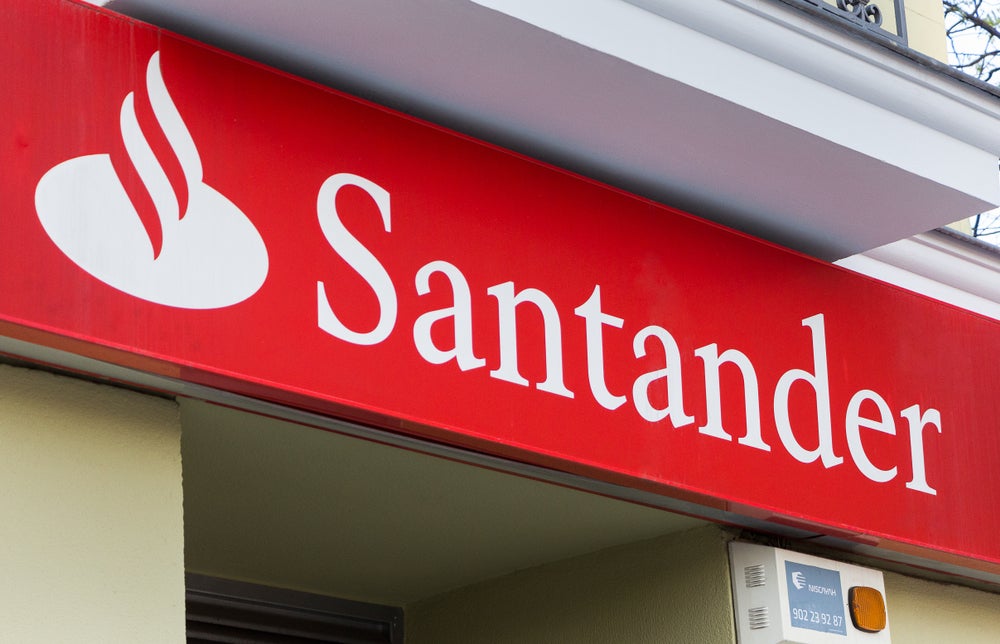Santander reckons it has stolen a march on its UK rivals
with the planned January 2010 roll-out of the Zero account,
promising no fees for bounced cheques or unpaid direct debits.
Despite being offered only to the bank’s mortgage customers, the
potential up-sell is some 1.75 million customers, reports
Douglas
Blakey.
Spain’s Santander, which operates the UK’s fifth largest retail
banking network, is to launch an innovative current account in the
UK early next year which not only aims to increase cross sell
metrics but also capitalise on widespread consumer discontent in
the country over ‘unfair’ banking fees.
News of Santander’s Zero account launch came only a few days before
a surprise ruling from the UK Supreme Court on the ‘fairness’ of
some UK consumer banking fees. It held that the Office of Fair
Trading (OFT), a government sponsored competition regulator, cannot
investigate unauthorised overdraft charges under consumer
protection rules which govern fairness, a decision which overturned
two earlier court judgments.

A final judgment in favour of the OFT had been
widely expected to kick-start a fresh wave of litigation from
consumers as well as product innovation from current account
providers – and while a ruling in favour of the banks has come as a
welcome surprise for the beleaguered UK banking industry, most
major UK retail banking players have begun to re-examine fee
structures.
At the end of 2008, Santander’s UK-based
brands ranked fifth by market share for current accounts, with
around 7.5 million current account holders.
How well do you really know your competitors?
Access the most comprehensive Company Profiles on the market, powered by GlobalData. Save hours of research. Gain competitive edge.

Thank you!
Your download email will arrive shortly
Not ready to buy yet? Download a free sample
We are confident about the unique quality of our Company Profiles. However, we want you to make the most beneficial decision for your business, so we offer a free sample that you can download by submitting the below form
By GlobalDataEarlier this year, Santander UK’s chief
executive, Antonio Horta-Osorio, disclosed the bank had targeted
one million net new current accounts during 2009. By the end of the
third quarter, the bank was on track, with 817,000 net new accounts
opened while its overall market share across the core retail
markets of mortgages, savings and bank accounts had risen to 11
percent.
A potential market of
1.75m
While Zero – slated to debut from 11 January
to coincide with the rebranding of the group’s UK subsidiary brands
Abbey and Bradford and Bingley to Santander – will just be offered
to the bank’s mortgage customer base of two million, only 250,000
of this segment currently hold their main current account with
Santander.
The principle elements of the Zero account
include:
• No charges for unpaid items
including direct debits, standing orders and bounced cheques;
• No charge for use of ATMs
worldwide and no foreign exchange fees;
• Fee-free debit card usage for
purchases worldwide;
• 6 percent interest on credit
balances for current accounts, guaranteed for one year;
• An unauthorised overdraft interest
rate of 12.9 percent; and
• No banker’s draft fees.
It now remains to be seen how Santander’s
rivals react to its initiative. Lloyds’ Halifax subsidiary had
previously disclosed a radical change to its overdraft charging
structure: from 4 December it will abolish penalty fees and an
annual rate of interest and in their place charge customers a daily
fee of £1 ($1.63) for going overdrawn up to £2,500.
Above that figure and Halifax will charge £2 a
day while the daily fee for an unauthorised overdraft will be
£5.
Rude health
Santander’s third-quarter results flagged up
the growing importance of its UK unit, with only its Spanish and
Brazilian units contributing more to group profits (see pie
chart below).
The results also highlighted the continued
rude health of the UK arm in contrast to two of its main rivals:
Royal Bank of Scotland; and the country’s biggest current account
and mortgage provider, Lloyds Banking Group.

In the first three quarters (including sister
brands Alliance & Leicester and Bradford and Bingley),
Santander UK punched above its mortgage market share weight of 13.4
percent, with £5.1 billion of net lending – more than half the
total sector total as international banks and building societies
cut credit lines – and a gross lending market share of 18 percent
for the year to date.
Other highlights included slashing its
cost-income ratio to a peer-busting 41 percent, down from 50
percent in the third quarter last year; reducing its
loans-to-deposit-ratio to 128 percent from 169 percent a year ago;
and achieving retail savings growth of 4 percent, with total retail
deposits of £1.21 billion.
Earnings were also up, with third quarter net
profit of £374 million up 36 percent from £275 million a year ago.
For the year to date, net profit of £1.16 billion was 37 percent
ahead of the corresponding period last year.







